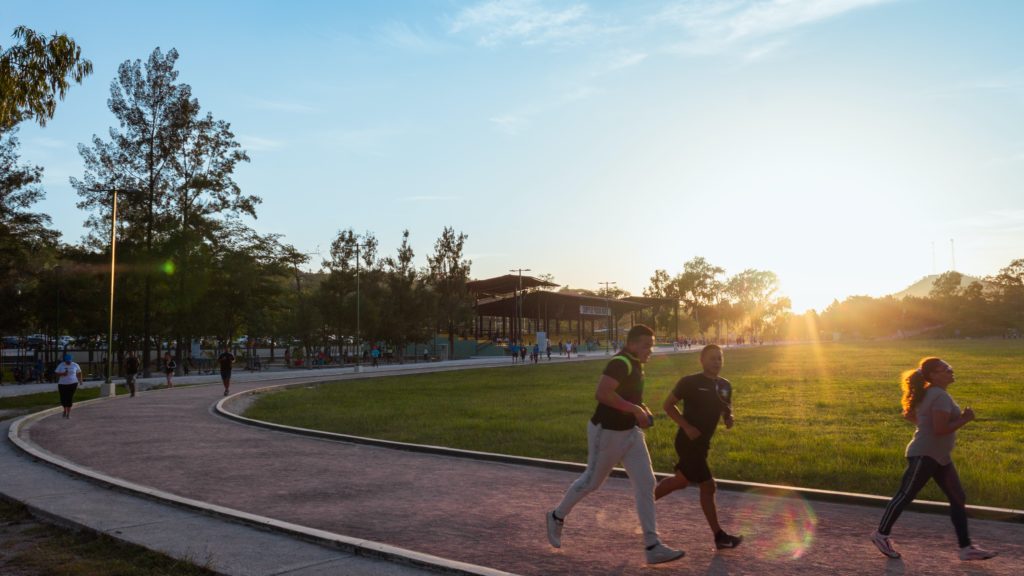What Are Various Types of Runs and Workouts? What Are They Used For?

If you are training for something in particular, you might have heard of the various types of runs and workouts you “should be doing.” It can feel overwhelming. There are several types of runs and each provides different benefits, but they all aim to make you a stronger runner. How often, outside of running, have you heard someone talk about a “fartlek?” Probably not ever and that is most likely not going to change.
As you plan your training, here are a few of the essential types of runs you should consider:
Types Of Runs
The Base Run
Also known as a daily run or easy run, the base run is an easy medium-length run. It’s not designed to be fast or challenging but to build your base and endurance but many runners are guilty of running their base runs too quickly. You should be able to talk the entire time.
Base runs help your aerobic capacity, endurance and running economy. They will comprise the majority of your weekly mileage training, and can sometimes total 80% of your weekly miles.
The Recovery Run
The recovery run is usually a short run done at a super pace. It might be your shortest and slowest run of the week. Some people choose to substitute recovery runs with a cross training activity.
So what’s the point? Recovery runs add mileage to your training without adding stress. Typically they are done the day after a hard workout or race. You might even need two days’ worth of recovery runs or even more. The point of a recovery run is to keep your heart rate low. They aren’t meant to build endurance but are intended to add a few miles to your training without too much stress.
The Long Run
If you are training for a marathon, the chances are that you’ve heard of the long run. But long runs are relative, and any distance race requires long run training. Yes, even for a 5K. But your long run for 5K training will look different than your long run training for 26.2 miles.
The long run is a type of base run which is long enough to leave you tired. The length of your long runs can vary depending on the race distance for which you are training. What is the point of long runs? Long runs help build your endurance and give you confidence. You can’t expect to run 26.2 miles well if the longest run of your training is a long run for just an hour!
Types Of Workouts
The next several types of runs are workouts. You don’t want to do a workout every single day and it’s important to run easy with base runs. Workouts should be done once or twice a week with plenty of time in between for recovery.
The Hill Repeats
Runners do hill repeats early in their training cycle to build fitness and power. Running hills is HARD. Hill repeats are repeated short segments of hard uphill running. What’s the best way to run hill repeats? Find a short hill segment that you can run hard for 60-90 seconds. The perfect hill is somewhere between a 4-6% grade. Hill repeats will help increase aerobic power, pain tolerance, and run-specific strength. You can also add hills to your base runs, but keep in mind you will go slower (and that’s okay).
The Progression Run
Very few things in the sport of running feel better than being able to finish a run or a race fast. Progression runs can help with that. A progression run starts at a runner’s easy pace and continues to get faster and more challenging. The longer you run, the harder it gets! Because these runs are considered to involve a medium effort (i.e., not as hard as a traditional workout), you will generally recover faster.
The Fartlek Run
Fartlek is a Swedish term meaning “speed play”. Fartlek workouts are comprised of a base run mixed with intervals of various distances. They are a great way to begin a speed workout without doing sprints on a track. On the surface, fartlek runs seem like an “easy” workout, but there is more to them than meets the eye.
An easy way to begin a fartlek workout is find something in the distance, a light pole, car, house and sprint as hard as you can to it. Then take some time to recover and do it again.
The Tempo Run
Tempo runs, also known as threshold runs, are sustained efforts at lactate threshold intensity. This is usually around the pace of a seriously run 10K, or the fastest pace you can run for one hour. But you aren’t generally going to run that pace for an entire hour, and many newer runners start with tempo runs of around 10 minutes. Tempo runs are going to help increase your fitness and also your mental strength. Running hard for 20-30 minutes or more can seem daunting and mentally challenging, but it provides valuable benefits.
Intervals
Intervals are what most people think of when they think of running workouts. These runs are usually fast, short segments that can be done either on the road or a track. Between each interval is a period of easy running, walking or even standing. I’m a fan of running 400 repeats (one lap around the track) with 1-2 minute rests. This type of workout gives you the ability to run faster and plus recovery in-between.
As you can see, there are several types of runs and workouts that help build fitness. The essential piece of running is enjoying it. No one gets faster if they aren’t enjoying it. Some plans might include more tempo runs, while others might enjoy short, quick intervals. As always, listen to your body while you are training and doing any of these runs.

Hollie is a runner, hiker, swimmer, residing in California. She has worked in run specialty for nearly 8 years and has fit hundreds of people for shoes. Outside of the running world, she enjoys the general aviation world, her two cats, and spending time with her spouse.









